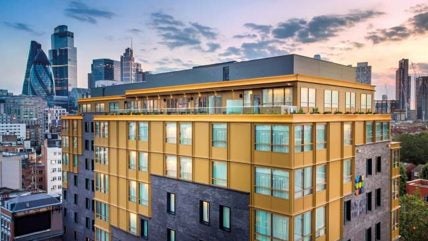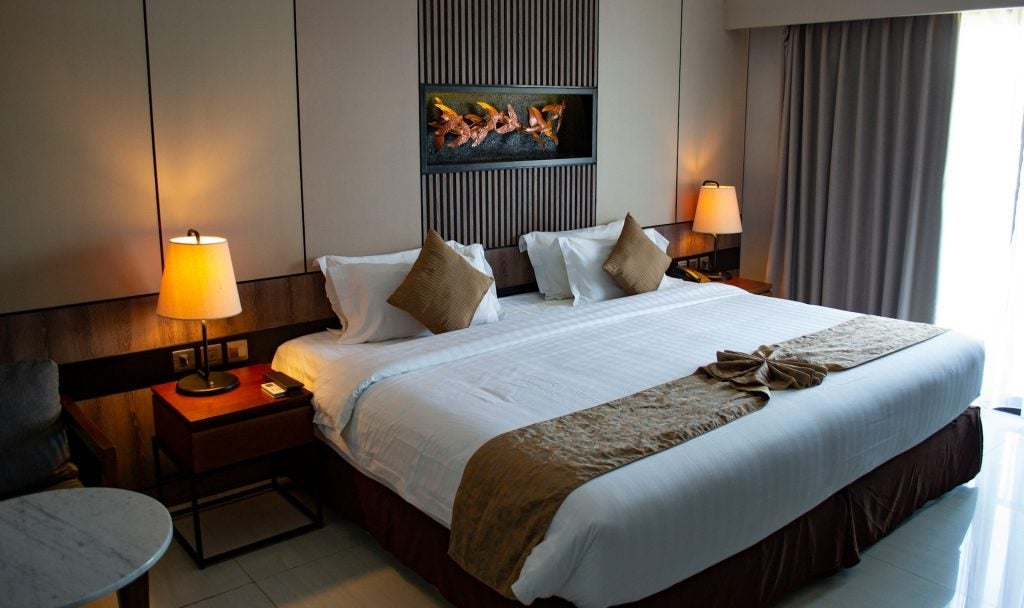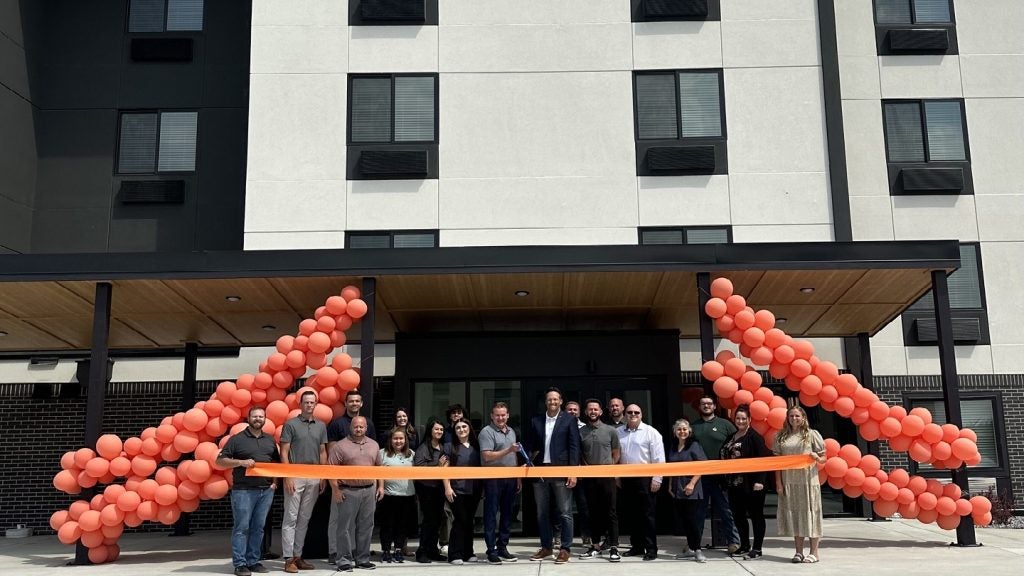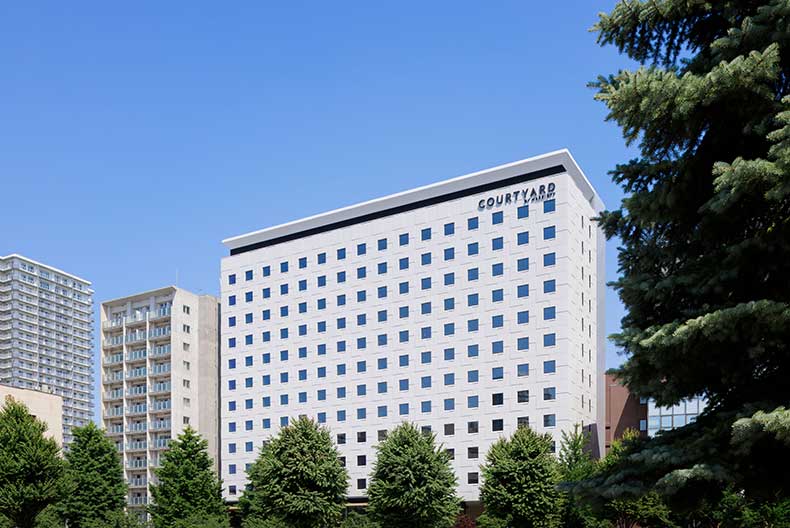
Independent design consultancy chapmanbdsp has over 50 years of experience specialising in building services engineering and environmental design, and is now at the forefront of sustainable hotel design. This Q&A with Tom Williams, Associate Director, explores the company’s approach to integrating sustainability into its projects.
What is chapmanbdsp’s philosophy when it comes to incorporating sustainability into the design of new hotels?
“Sustainability isn’t considered an add on; it’s something that we’ve integrated into our entire design approach: it really has to be the integral first step in the decision-making process.
In order to get the best out of any development, either a new building, or an existing building that is being redeveloped, we need to start from a very early stage engaging with all the project stakeholders to embed the principles, rather than try later in the process to retrospectively apply sustainability goals and targets.”
Chapmanbdsp’s experience extends beyond hotels, encompassing a wide range of sectors across 32 countries. This diverse portfolio allows the company to bring valuable insights and innovative solutions to its hospitality projects.
For example, its work on the IHG, UK Portfolio Upgrade involved upgrading the MEP systems (mechanical, electrical, and plumbing) across various hotels, including buildings with listed status. This project demanded creative solutions to integrate modern amenities while respecting the historical significance of the structures.
How well do you really know your competitors?
Access the most comprehensive Company Profiles on the market, powered by GlobalData. Save hours of research. Gain competitive edge.

Thank you!
Your download email will arrive shortly
Not ready to buy yet? Download a free sample
We are confident about the unique quality of our Company Profiles. However, we want you to make the most beneficial decision for your business, so we offer a free sample that you can download by submitting the below form
By GlobalDataWhat specific design elements are prioritised to minimise environmental impact?
“Whole Life Carbon assessments for developments from the outset are a critical part of minimising environmental impact. We look at defining operational energy and embodied carbon targets associated with the design, construction and in use conditions of a site.
We will then use metrics such as BREEAM as a compliance tool which is really helpful when assessing broader elements of sustainability such as building materials, management and water conservation. And, obviously, there are some statutory requirements that you have to fulfil like Part L.”
A recent example of its sustainable design expertise is the Hyatt Place, London City East. This project involved transforming a redundant office building into a 280-key hotel.
Williams said, “as a whole design team, we were nonetheless very conscious of the implications of design considerations regarding sustainability, for example reusing the existing structure and replacing the facade with something significantly more high performance to reduce embodied carbon and operational energy respectively.”
What metrics are used to measure the environmental impact of your new hotel designs compared to older properties?
“There are of course a number of different building assessment tools and certifications that we utilise.
NABERS (Design for Performance) is an interesting one to consider because even though it’s currently only applicable to commercial office developments, it prioritises design principles which are applicable to all developments.
Hotels of course operate very differently from office buildings and there are many different typologies. A city centre hotel is very different from a luxury resort and then there are different seasonal and daily usage patterns to consider.
There is limited public data to benchmark hotels in terms of operational energy right now, which is what the NABERS initiative is providing for the commercial sector, this perhaps reflects a sector consciousness on these issues that the commercial sector is leading ahead of hospitality.”
How do you collaborate with other professionals to ensure sustainable practices throughout construction?
“The industry is buying into the process more and more, sustainability is seen as so much more than a marketing tool now. It’s an essential part of most practices’ business plans. Architects and Structural Engineers have their own internal goals and targets that they’re trying to achieve. We’ve seen a massive improvement in the last two to three years, so it’s definitely not a one way conversation.”
Are there any specific challenges or limitations you encounter when integrating sustainability into new builds?
“From a design perspective, you could argue that new builds are a lot easier, but that said the targets are harder and those developments are rightly held to a higher standard.
The main challenges in the hospitality sector are more around brand expectations. Commercial developers project goals will be aligned with their sustainability goals from the outset. The main challenge is achieving hospitality sector clients’ priorities of brand standards, cost and sustainability.”
How do you anticipate regulations and guest expectations around sustainability evolving, and how is your design approach adapting?
“Guest expectation is driving a lot of this change, I think the step change is probably in a more informed guest and that goes far beyond whether their towels are going to be reused, it means a full commitment to sustainability by the hospitality sector.
How hotels track information is going to be key for the next five years. We’ll see a big development in the data collection side of the industry, and actually being able to inform the guests who will stay based on a hotels’ carbon emissions and energy performance, already certain business travellers need to report the scope of their emissions.
From a regulatory perspective, I don’t think there’ll be a significant shift for the hospitality sector specifically, though there are specific targets and assessments stipulated in central London by the GLA, which are likely to extend into wider planning requirements in the future, with more of a focus on whole life cycle carbon emissions in the future.”







